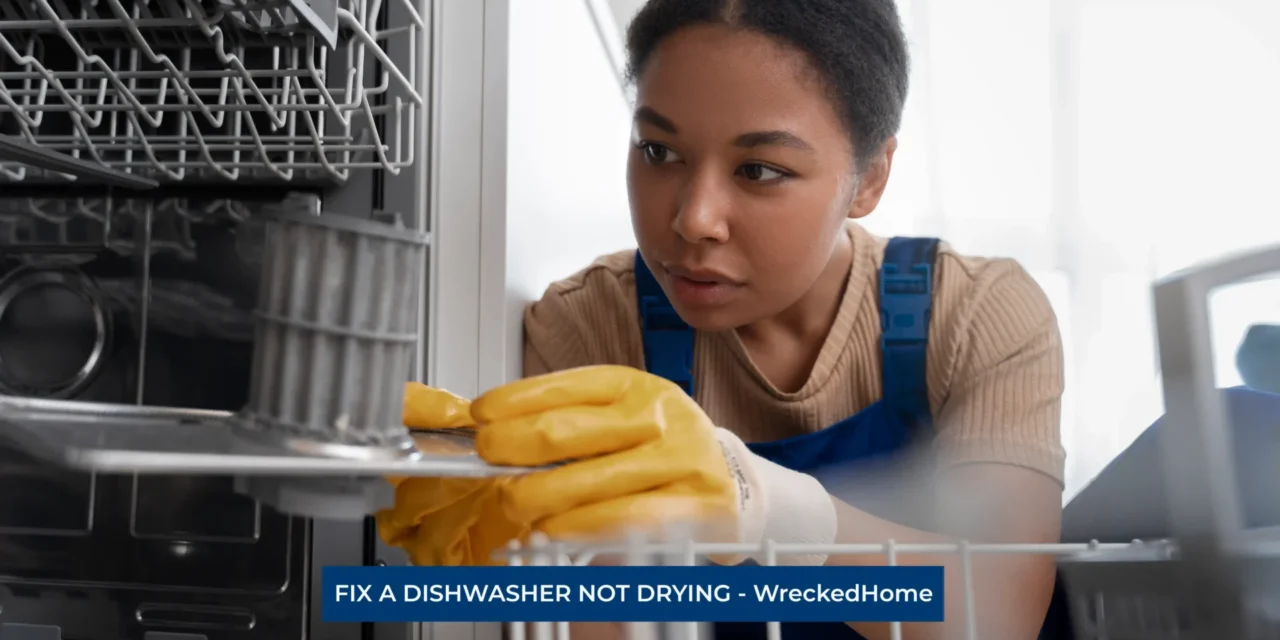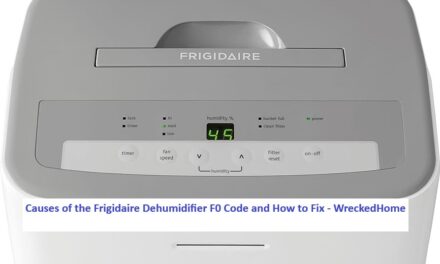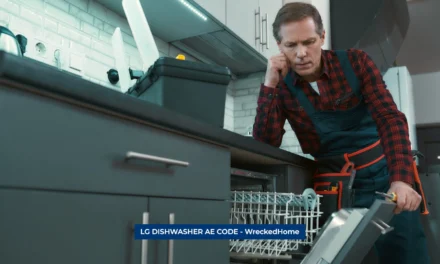The dishwasher has two functions: washing and drying. If it is doing one task efficiently then why not second one? Imagine you open your dishwasher after it finishes a cycle to unload utensils. You will stunned of you see that the items are still wet or damp and dishwasher. This means that they not drying properly. At that point, it’ll be time to find the real cause behind your frustration.
The dishwasher not drying may be partially your fault. This is the case if you poorly place your dishes into the dishwasher. Malfunctioning parts, wiring issues, and a rinse aid problem can also be reasons behind this issue. You can repair and replace faulty parts, add rinse aids, and do many things to fix the issue.
Let’s discuss problems and fixes in detail to make your kitchen chores a little bit more breezy.
- Reasons And Fixes for a Dishwasher Not Drying
- Drying Cycle Setting
- Check Rinse Aid Dispenser
- Improper Load Causes your Dishwasher Not Drying
- Plastic And Teflon Material
- Check Heating Element
- Dishwasher Not Drying Due To Vents & Fans
- Defective High-Limit Thermostat
- Door Should Open After Final Rinse
- Final Rinse With No High Heat
- Faulty Hot Water Heater
- Wiring Issue
- Conclusion
Reasons And Fixes for a Dishwasher Not Drying
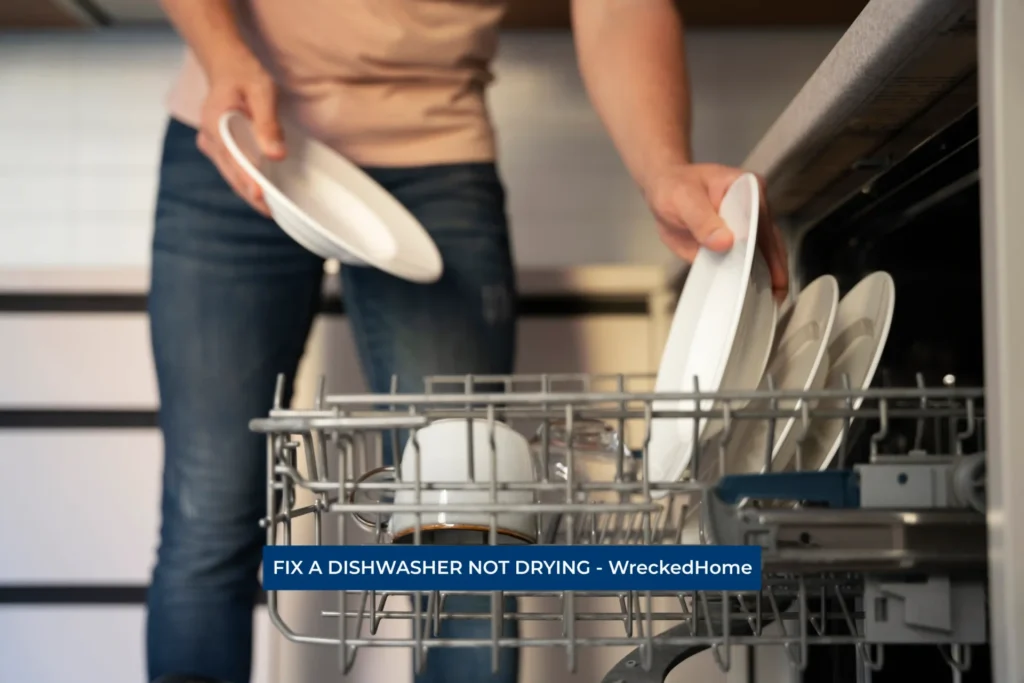
Dishwashers are blessings for those who know how tiresome it is to scrub, wash, and dry utensils by hand. With its help, kitchen cleanup chores are somewhat exciting. Buts what if you encounter the problem of your dishwasher not drying? What if it stops working completely? It will seems like the end of life.
Don’t worry. This blog will help you. Keep reading about the common issues which lead to your dishwasher not drying properly. We will also discss their possible fixes. However, if your dishwasher is completely damaged, you may need a replacement. You can read our comparison of Thermador Vs Miele to find out which company offers best dishwasher.
Drying Cycle Setting
Every dishwasher has its own cycles and settings. Some come with multiple drying settings that can be adjustable according to the volume of washed dishes. Here we discuss two main types of dishwasher drying settings.
- Air Drying
- Heat drying
Air drying
The air drying settings of dishwashers use less energy and can be used at room temperature. The wash cycle is short, but plastic or Teflon-coated dishes retain water. They don’t dry completely and cause issues. Therefore, this air-drying method does not properly work on plastic and Teflon-coated dishes.
Heat Drying
Heat drying takes more time than air drying and it raises temperatures in your dishwasher. You need 15 minutes or more for each cycle, and it also consumes more energy. People with good electricity power supply and money to pay extra bills can wash the dishes by heat drying them thoroughly.
If you encounter the problem of your dishwasher not drying, maybe your dishwasher has skipped drying. It is helpful in saving energy but lowers drying quality. You can manually turn on heat drying setting for proper work.
Additional Information:
Many dishwashers use rinse aid products. It improves drying and promotes better water drainage during the last rinse cycle.
Tip:
After completion your last rinse cycle, open the door of dishwasher for some time. It helps the leftover water to evaporate and makes the drying process more efficient. Also check Dishwasher Control Board to find out if there are any faults beyond your control.
Incorrect Cycle Settings
Sometimes the dishes come out wet or watermarked. You can manually turn on the heat-dry function to complete the process. It is important to note that if the dishwasher has a default heat dry cycle during the normal wash then the dishwasher will skip the heat dry cycle if it is on express wash or quick wash settings. So, it is important to choose between dry dishes or quick cycles for proper wash cycles.
Visit our store for 10% off our Cleaning Products here.
Check Rinse Aid Dispenser
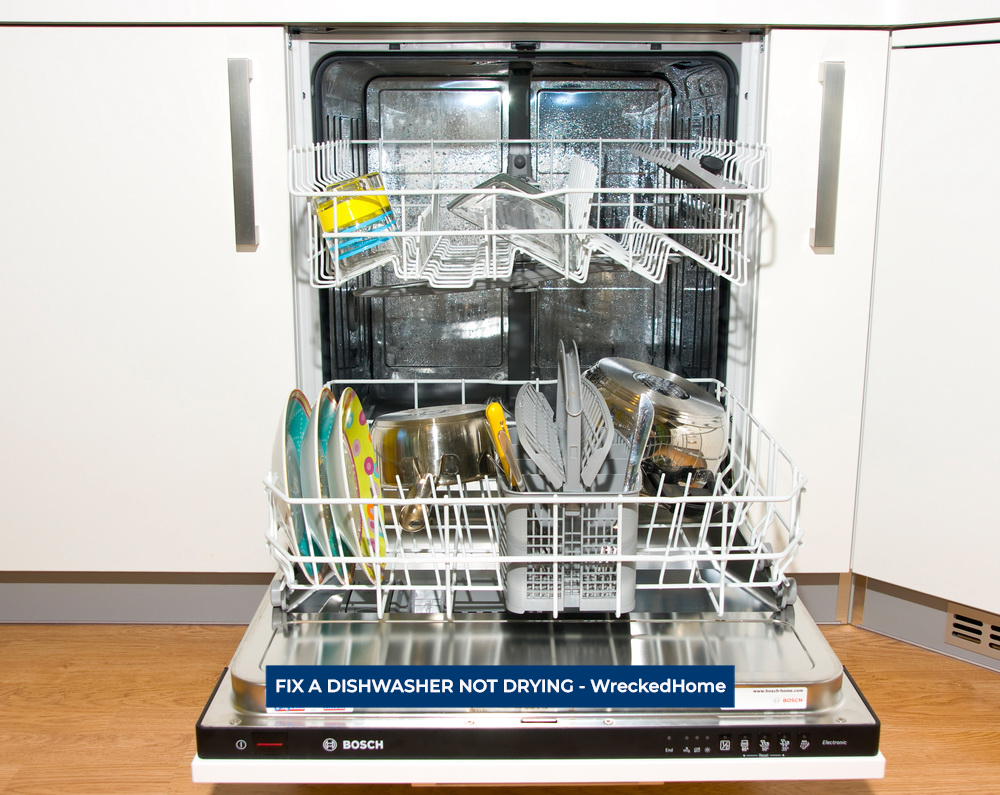
Rinse aids are usually important to shed water and dry dishes quickly. It reduces
watermarks and streaks, preventing the accumulation of water droplets on dishes. Not every dishwasher comes with a rinse aid dispenser.
It is important to check the level of rinse aid before next cycle. Most dishwasher companies recommend using rinse aid. However, it is not a mandatory option. But if you keep running into the problem of your dishwasher not drying, maybe the culprit is this.
How To Check if Rinse Aid Is Not In Reservoir
Checking rinse aid is simple. If it has run out of rinse aid it starts leaving dishes wet. This is a sign to refill the reservoir.
Damage Rinse Aid Dispenser
Many dishwashers have rinse aid reservoirs. They dispense the needed fluid at a proper time during the cycle. If it becomes discolored or wrapped, this means the rinse aid dispenser is not working well. Therefore, it is the right time to replace the RA dispenser.
Dispenser Filled With Rinse Aid But Can’t Dispense Off
Sometimes when you experience your dishwasher not drying, the reservoirs are not working properly. If the dispenser is full with rinse aid, then maybe the fluid doesn’t dispense at the proper time. It may be due to a rinse buildup in the reservoirs. So, first clean it and then continue. It is actually one of the most basic steps in cleaning your dishwasher.
Rinse Aid Chamber:
Check the rinse aid chambers and make sure that the cap opens and closes without any interruption. Add rinse aid up to the level needed for your dishwasher. Make sure to open the door when the final rinse cycle is complete to evaporate the remaining moisture.
Rinse Aid Benefits:
Rinse aid products in the dishwasher reduce the surface tension of water and clean the dishes in a way that doesn’t form water droplets on the dishes. So, your dishes are safe from white water spots and water droplets. It also helps dry dishes faster particularly in dishwashers which come with condensation drying.
Improper Load Causes your Dishwasher Not Drying
How you set utensils in the dishwasher has a great impact on the dishwasher. It is difficult to find space in the packed dishwasher if you do not properly position dishes with enough space between them. Improper spacing between dishes or poor dish placement disturbs the wash cycle and also obstructs airflow while drying. So, the common reason for dishes being wet or watermarked is poor placement of dishes.
You should leave some space between items/dishes. Thus, the drying fan blows hot air which properly spreads over the whole surface area. Due to improper placement, the air may not properly reach the appropriate surface and leave moisture. So, avoid stacking items and leave enough room between dishes for proper drying.
For proper work, check your dishwasher manual to understand how to place dishes in it. You can also follow our advice below.
1: Top rack should contain:
- Cups
- Glasses
- small bowls
- dishwasher-safe plastics
2: Sides should contain:
- Platters
- cutting boards
- other over sized pieces
3: Bottom rack should contain:
- Plates
- serving bowls
- dishwasher-safe pots and pans
4: Silverware basket should contain:
- Forks and spoons with handles down
- knife handles up
To check results, you can use both ways: stuff dishwasher with dishes or run the cycle with properly placed dishes and see the difference between results.
Moreover, after drying, first remove dishes from thebottom rack. It helps to avoid spilling water on items below, while removing the upper rack ones.
Plastic And Teflon Material
Glass and ceramic are good to wash and quickly dry in dishwashers. But if you put Plastic and Teflon utensils, they often stay wet when the rest of the load is dry.
The first reason is that moisture and excess water cling and remain on such dishes. Some dishwashers have condensation methods to dry dishes. So, a hot water final rinse causes items to retain heat. Plastic and Teflon don’t retain heat as well and don’t allow water to evaporate well. Sadly, you can’t fix this issue. By washing Teflon kitchenware by hand you may relieve some stress.
Check Heating Element
Old dishwashers also have heating elements mostly located on the bottom. Whether covered or uncovered, you can easily access them by removing the cover. As a long shoe shaped wire with plugs on either end in dishwasher’s back, you can easily recognize it.
During a dish washing cycle, the heating element’s main function is to raise water temperature. It can warm the interior of the machine between 110 and 170F. If your dishwasher is not drying properly that means your heating element is defective or not working properly. Here we give you some tips to check the working of its heating element.
- Disconnect the dishwasher from its power source for safety. It is important to check the heating element.
- First, find the location of the heating element, which is mostly at bottom of the tub. You can also use user manual of your appliance to check the location.
- Inspect the heating element to see whether it is broken or has some damaged areas.
- If you see any damage, it is necessary to replace it and an expert can do this for you.
- If you find no damage, you have to move further. Thus, remove the panel beneath door and then take off heating element. Check the terminal and then find issue in connectors. If you see corrosion, remove it and in case of wiring issue call the experts.
How to test the heating element?
You can test heating element with a multimeter. The reading on a multimeter shows that your heating system is either defective or working fine. You can also consult your product user manual for the correct reading of the dishwasher. Ideally, the reading is between 15 to 30 ohms. If the multimeter shows zero then the heating element needs to be replaced or needs improvement.
Tips:
If the heating element is not working then consult a professional for repair or replacement.
Dishwasher Not Drying Due To Vents & Fans
Most of the dishwashers have vents with the motorized doors. These vents are responsible for releasing hot air from the dishwasher. Vents are present on the inside of dishwasher door. If vent door doesn’t open properly then it will affect the process. Dishes will fail to dry properly. Vents also come with a fan that will blow the hot air out of the vent. The fan and its motor lie inside the dishwasher door.
Check Vent & Fans
Sometimes the fan motor fails and that causes the issue of your dishwasher not drying properly. Fan blades can also be a cause of interruption in proper working of the dishwasher. Damage Vent assembly also demands assistance; therefore, its replacement is necessary. You can check it with a multimeter.
Blocked Vents
The issue may be a blockage in vents. Check the vents in the dishwasher door to see whether they are partially or fully closed. If you can close and open it easily that means it is working fine. But If the door seized is closed or in a partially closed position then that means there is a block in the vents thus, it needs replacement.
Defective High-Limit Thermostat
Dishwashers that have heating elements also have high limit thermostats. It is used to regulate the temperature of water and turn off heating elements when water reaches a certain temperature like 200F. Your dishwasher may never reach the high temperature that is required to wash and dry the dishes. It saves heating elements from overheating.
High Limit Thermostat Location
A high limit thermostat is present under the dishwasher tub and is easily accessible by removing the kick plate.
Proper functionality of your dishwasher is based on a high limit thermostat. It acts as a safety device and stops the heating element from becoming too hot. If the thermostat works properly, it turns off the heating element before the dry cycle finishes.
Faulty Thermostat
If the thermostat fails, the dishwasher runs at a cooler temperature and the heating element automatically turns off during the cycle. So, faulty high limit thermostats can cause the dishwasher not drying properly.
How to check a defective thermostat
The multimeter is used to check the high limit thermostat. If it shows a reading of infinite resistance, it needs replacement or repair. You can also check if electricity is running through the part, if it shows no sign then it needs replacement.
Door Should Open After Final Rinse
If your dishwasher dries dishes by condensation, the items that were dry before become moist again because air trapped in dishwasher cools down. So open the door after the rinse cycle finishes so that humid air comes out. Thus, it doesn’t condensate on dishes and evaporates. Some modern dishwashers provide a facility that automatically opens the door after the process completion.
Final Rinse With No High Heat
In a dishwasher that dries via condensation, the final hot rinse is necessary. So it is vital to check out the user manual to know more about the final cycle. Specifically when you encounter your dishwasher not drying, you will need to check this.
Faulty Hot Water Heater
Modern dishwashers heat the water to the right temperature before the process, but this may not be the case with your dishwasher. Check the settings of your hot water heater and adjust them manually. Water in the dishwasher needs to be between 120 and 150ºF (49 to 66ºC). Also check the timing of the cycle.
Wiring Issue
Sometimes your dishwasher doesn’t work properly. The cause may be wires that connect the control board with heating elements and the high limit thermostat. These wires can be damaged or disconnected. Replacing faulty wires or reconnecting wire connectors may solve the problem.
Note: If the whole dishwasher is not workable or repairable, try to invest in a new one. Check the best brands that offer dishwashers; KitchenAid Vs Thermador.
Conclusion
Sometimes you may encounter the problem of your dishwasher not drying properly. This is a common issue in every home. As machines bring ease to your kitchen work, it’s critical to find the real causes and solve them.
For any repairs, installations, builds, or questions; We recommend you to hire a professional. Find A Pro Near You Here!

